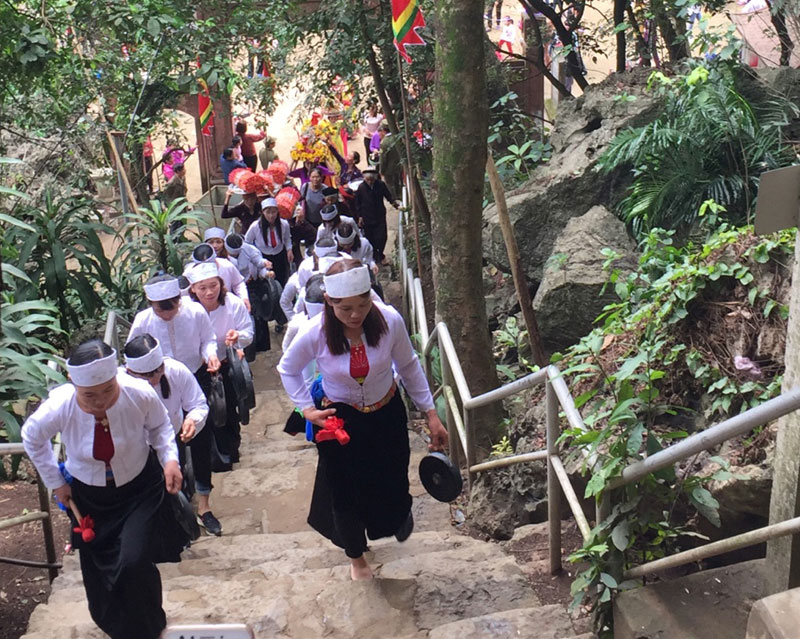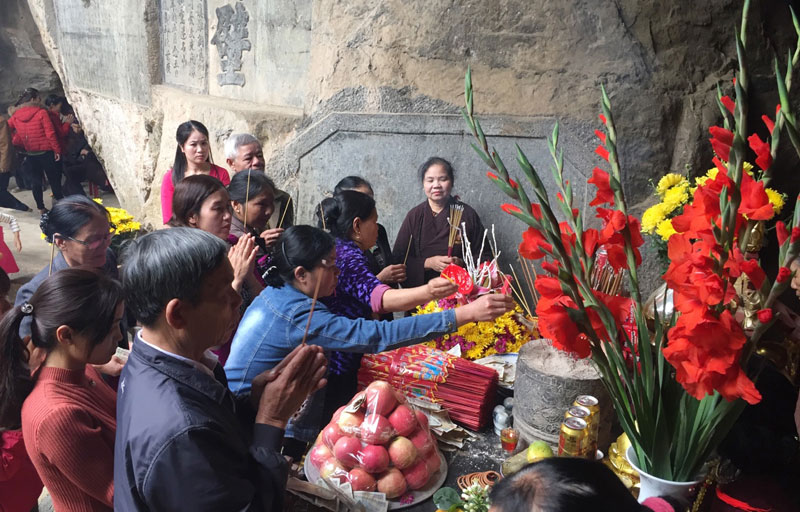



The gongs system leading the procession up to
Hang Pagoda
On Lunar January 14th, there were exchange activities of sports and art performances "Happy Party – Happy Spring”. On Lunar January 15, the festival were held with the activities of: procession, lion dance, shuttlecock throwing , the final match of volleyball competition, etc.
In 1994, Hang Pagoda – Chua Cave was
recognized by the Ministry of Culture as a national historical-cultural relic.
Since then, on the first days of the Lunar New Year, Yen Tri commune jubilantly
opened the Hang Pagoda Festival. It is an annual traditional festival held on
the occasion of the full moon of Mid - Lunar January with the purpose of
praying for the security of nation and people, for good weather and good
harvest. It is a beautiful combination of Buddhist culture and traditional
culture. Coming to the festival, the people and visitors could see the unique
pagoda scene in the cave; then they could light the incense to respectfully
pray the Buddha for fortune, talent; and then participating in cultural
exchanges and folk games.
This year, the festival was held at the commune level. The highlight of this year's festival is the volleyball competition exchange which took place very actively with the participation of volleyball teams of Lac Son district and Nho Quan district (Ninh Binh province).

Local people and visitors from everywhere
dedicating the offer, lighting the incense to pray for fortune, talent and
peace for a new year.